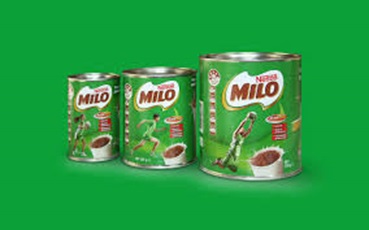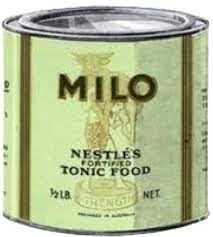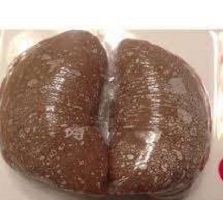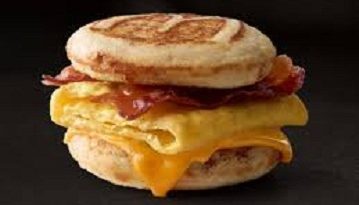10 Fun Facts You Never Knew About Milo Drink for Kids
10 Fun Facts You Never Knew About Milo Drink for Kids

Whether you prefer MILO hot, cold, stirred in, or sprinkled on top of a glass of milk, these are some things you probably never heard about “The Food Drink,” as it celebrates 90 years of existence this year.
Milo, often spelled MILO, is a popular beverage in Oceania, South America, Southeast Asia, and some regions of Africa. It is made with chocolate and malt powder combined with hot water and milk. Thomas Mayne created Milo, a product of Nestlé, in Sydney, Australia, in 1934. It is sold and promoted throughout numerous nations.
Originally marketed as a powder in a green tin with images of different sports, Milo is also available in some countries as a premixed beverage. It has since been expanded into other products, such as breakfast cereal and snack bars. In certain countries, its taste and makeup are different.
In a wide variety of regions, including Malaysia, the Philippines, Indonesia, Colombia, Peru, and Central and West Africa, Milo continues to enjoy considerable popularity.
Table of Contents
Milo: The origins of MILO® and its historical background
The famous crunchy milk drink MILO® was first produced in 1934, during the height of the Great Depression, by Smithtown, New South Wales, chemical engineer Thomas Mayne.
Nestlé set out to create a tonic drink that would be affordable for families, tasted well enough for kids to consume, and provided them with the necessary vitamins and minerals. Additionally, indigenous components like cocoa, dried milk, and malted barley had to be used to make the beverage.
The task fell to Thomas Mayne, a young trainee chemical engineer, who worked for four years to create what is now known as MILO®. His goal was to make a vitamin and mineral mixture that would dissolve when shaken rather than just sink to the bottom of the glass. He was not able to reach it quite.
When Mayne entered his kitchen one day, he saw Margaret, his daughter, and her brother removing the crisp particles of MILO® powder off the top of their beverages. That’s when he realized the crunch was a feature rather than an issue! Thus, MILO® as it is known today was created and named for the Greek wrestler MILO® of Croton, who flourished in the sixth century BC and was known for his extraordinary strength.
The 1934 Sydney Royal Easter Show saw the public debut of MILO® Tonic Food.
Milo: The famous MILO® Tin

The distinctive MILO® tin was created to facilitate the easy distribution of Mayne’s MILO® to families throughout Australia when it was ready for sale. Like MILO®, this has endured to this day.
Nutritional Value of Milo data
For every 100 grams of powder, Milo provides 1,680 kJ (402 calories), primarily from carbs. The body can use carbohydrates as fuel, which is why Milo is touted as an energy drink. The majority of the carbohydrates are sugars. Milo, the variety sold in New Zealand, contains 46% sugar.
When dissolved in water, Milo has the same glycemic index (GI) as Coca-Cola—55. A very tiny amount of Milo added to a cup of milk will result in an overall GI closer to 33, and a huge amount of Milo added to a cup of milk would result in a GI closer to 55. This is because milk has a significantly lower GI of 30 to 33.
According to the Milo website, the beverage has a lot of calcium, iron, and B1, B2, B6, and B12 vitamins. Although Nestlé has trademarked the moniker “Actigen-E” for the vitamins used in the Milo mix, this is all that is said in the advertisement.
Theobromine, a xanthine alkaloid that is related to caffeine and found in the chocolate used to make the product, is present in Milo.
Derivative products
In Nigeria, Ghana, and Dubai, milo is sold as a snack in a cube shape.
Milo chocolate bar.
While the original and malt Milo variants are still available in Australia, a new form of the cereal known as Milo B-Smart was introduced in 2008. It has a finer texture and additional iodine and B vitamins. It is touted as a kid-friendly health food and tastes different from the original Milo recipe.
Several Amazing and Interesting Fun Facts About Milo, a Beverage Drink
Many people drink this beverage and are unaware of certain important information about what they are ingesting. I’ll be sharing some potentially startling and entertaining facts about Nestlé’s Milo with you in this post.
1. Milo Was Developed in Australia, Not Switzerland
I had assumed that this should not be shocking, but after consulting a large number of people, I realized how mistaken I had been. Many people are aware that Milo was created in Switzerland, home of Nestlé’s corporate headquarters. No, Thomas Mayne created Milo initially in 1934 in Sydney, Australia.
All I’m trying to do here is give you an overview of Milo and its background. Pages 2 through 10 have more interesting and startling information. A few will truly leave you speechless! I swear to you. Simply select 2, 3, 4, 5, and so forth below
2. Milo Is Not for Everyone (Allergen Declaration)
According to the ingredients list on Milo sachets or cans, the main constituents of Milo are cocoa, milk, malt, and sugar. Barley and sorghum, the main grains used to make malt, are known to contain gluten, to which some people are extremely sensitive. However, it appears like Nestlé may have discovered a way to make their product gluten-free. This is what I’m saying because their product does not declare it.
In a previous piece, I discussed allergies and listed foods that some individuals may be allergic to, such as gluten, eggs, milk, soy milk, etc. I noted in a previous piece that eating a lot of gluten-containing meals may cause bloating in the abdomen and consequent protrusion of the stomach. Since Milo contains milk, those who are lactose intolerant may be more sensitive to it since lactose-rich meals like milk may also play a role.
Nestlé has done a commendable job of outlining the allergens that may be present in Milo in the following manner:
comprises soy and milk.
It is now your responsibility to form the habit of reading food labels in order to learn all of these things.
3. Milo contains more Malt than Cocoa by Weight
Astonished? I suppose that’s true! Many people believe that because Milo is consistently referred to as a beverage made with cocoa, it must have more cocoa than any other ingredient. However, based on the labeling found on cocoa cans and sachets, the contents contain more malt by weight than cocoa.
One may argue, “How did you find out that their mass and amounts aren’t mentioned there?Here we have international guidelines for food labeling, which I have no doubt a corporation the size of Nestlé will strictly adhere to. The guidelines provided by the Codex Alimentarius Commission (CAC) are listed below;
4.2 Ingredient List
4.2.1 A list of ingredients must be disclosed on the label, except for items with just one ingredient.
4.2.1.1 A suitable title that contains the word “ingredient” or incorporates it must head or precede the list of components.
4.2.1.2 When the product is being manufactured, all ingredients must be listed in descending order of incoming weight (m/m).
This indicates that the ingredient list should have the largest item stated first, then the next largest, and so on down to the least used ingredient.
Have you even read Fact Number 2? It is equally unexpected! Is it implied on Milo packs that some people shouldn’t eat it for safety reasons? Are you curious as to why? Next, verify number two!
4. The Name Is Pronounced as spelled.
A lot of individuals in this region of the world pronounce Milo incorrectly. Pronouncing the “i” as “ai” instead of “i” is correct. Instead of the sound that many have been calling it, this will give us /ˈmaɪloʊ/. I’m hoping that’s something that people can change.
Many people are unaware that they are pronouncing words incorrectly, while others are aware of this and believe it is not worth the effort because it can occasionally make them appear foolish. If you were to ask for /ˈmaɪloʊ/ in a grocery shop where everyone calls it /ˈmɪloʊ/, you would not only appear foolish but also incorrect when people try to laugh at your “mistake” and correct it inanely.
Though you can always argue your case and correct them on pronunciation, you usually meet with resistance, particularly when everyone in the room is adamant that it is pronounced /ˈmɪloʊ/. The corporation appeared to have given up on this in countries like Nigeria, even though it is pronounced correctly in most other parts of the world, since all of their advertisements refer to it as /ˈmɪloʊ/.
Were you aware that Milo can cause addiction?
5. You Can Get Addicted to Milo
Indeed, one can develop an addiction to chocolate drinks like Milo in addition to coffee. Remember that this is about cocoa-containing items, not simply Milo, so don’t think I’m going to start using Bournvita or anything. Caffeine is the ingredient that makes coffee addicts addicted, therefore even if you purchase a non-decaffeinated brand of coffee, it will still include that evil substance.
Theobromine, a xanthine alkaloid included in the cocoa used in the product, is what gives chocolate its mild addictive qualities when ingested in amounts greater than 15 heaped tablespoons per day. I suppose this is simply too much for anyone to handle in a single day.
Milo and Bournvita have about the same theobromine level, according to a study done in Nigeria to measure the caffeine and theobromine contents (mg/g) in samples of particular Nigerian beverage items. The drinks included tea (Lipton), coffee (Nescafe, Bongo, and Maxwell House decaffeinated), and chocolate (Milo, Bournvita, Rosevita, and Enervita).
6. Milo Contains More Sugar Than Malt, Cocoa and Milk
As previously mentioned, food goods are labeled with the quantity of each ingredient by weight, ranging from highest to lowest. This is the benchmark, and any respectable food producer adheres to it. If you take a quick look at any Milo can or sachet, you’ll see that sugar comes in first, then cocoa powder, milk solids (emulsifier: soy lecithin), and malt extract (sorghum).
Many individuals who are aware of this fact, however, are unsure of what they mean when they refer to sugar—is it simply sucrose, the kind of sugar we commonly use to sweeten meals, or is it the whole amount of sugar that is there because of other ingredients? For instance, lactose, a kind of sugar found in milk, is not sweet. The maltose from the sorghum used to make malt may also have added to the overall amount of sugar.
Here is what Milo’s has to say about that:
Natural sugars from lactose in milk make up more than half of the total sugars in a glass of MILO® and trim milk.
Less than one teaspoon of table sugar has been added.
The milk powder and malted barley constituents in MILO® powder naturally provide the remaining sugar.
Research has shown that Milo, which is produced in Australia and New Zealand, has glycemic indexes (GI) that are comparable to those of Coke. Startled?
7. The Glycemic Index of Milo and Coke Is the Same
Glycemic index data from Australia and Switzerland show that Milo dissolved in water has the same value as Coke. The Glycemic Index (GI) of Milo dissolved in water is 55, which is the same as that of Coca-Cola; however, this can be lowered by using milk rather than just water.
What Is the Glycemic Index?
A very tiny amount of Milo added to a cup of milk will result in an overall GI closer to 33, and a huge amount of Milo added to a cup of milk will result in a GI closer to 55. This is because milk has a significantly lower GI of 30 to 33.
They were also shown to have fairly similar GIs according to the International Table of Glycemic Index (GI) and Glycemic Load (GL). What was mentioned for each of those samples is as follows:
The glycemic index of a 250 g serving of Coca-Cola® soft drink (Coca Cola Amatil, Sydney, NSW, Australia) is 53±7, while that of a dissolved MiloTM (Nestlé, Australia) in water is 55±3. When dissolved in full-fat cow’s milk, Milo TM (Nestlé, Australia) has a GI of 35±2.
- The world’s largest Milo consumer base is Malaysian.
In Singapore and Malaysia, Milo is highly popular. It is most well-known in Malaysia, where the brand name is linked to beverages with a chocolate taste, just as many locals call any kind of noodle “Indomie.” The 90% global proportion of Milo consumption that is frequently mentioned does not correspond to Milo’s 90% market dominance in Malaysia.
When Milo was originally brought to Malaysia, it was utilized as a nutritional supplement. As a result, it became well-known as a “must-have” beverage for both younger and older people. This is why Milo is so popular there.
This essay was put together merely to educate readers about one of the foods we eat; it is not meant to be a commercial or to disparage or criticize any particular product. Many of the things discussed here are actually beneficial to Milo.
Lastly, it’s important to note that the beverage has a lot of calcium, iron, and B1, B2, B6, and B12 vitamins. The vitamins in the Milo recipe are known by their trademarked name, Nestlé “Actigen-E,” which is what is promoted as being included in the product.

FAQs
Fun facts you should know about Milo drink for babies
Main navigation
- Malt provides antioxidants for it.
- Its main component, milk, provides a calcium supply.
- The protein in it gives you energy.
- Because of the phosphorous, it can aid in the release of energy.
- Iron helps maintain healthy blood flow.
5 different ways people drink MILO
You can either:
- Pour the cold milk in first, followed by MILO®
- Pour in the MILO® first, followed by cold milk
- Pour in the cold milk first, followed by MILO® and then more milk
Try each technique out! First and foremost, fresh milk is crucial.
What are some fun facts about MILO?
Thomas Mayne, an industrial chemist, created Milo during the Great Depression, naming it after the Greek wrestler Milo of Croton. It was marketed as a “fortified tonic food” that could “nourish the sick, induce sleep, and soothe the senses.” Actually, it was meant to meet the nutritional demands of the kids.
What makes Milos special?
MILO has ACTIGEN-E, a special blend of eight vitamins and four minerals, including calcium, magnesium, B vitamins, and vitamin C, to help maximize the circumstances for your diet’s carbohydrate, protein, and fat-based energy release.
Is MILO good for infants?
Children and teenagers in elementary school are the best candidates for MILO® powder. For babies and young children up to four years old, it is not appropriate. It is recommended that toddlers who are one year old and under drink plain full-cream milk. For precise nutritional guidance, please see your healthcare provider.
Why is MILO good for kids?
The natural goodness of milk, sugar, chocolate, and malt goes into making MILO. MILO is both tasty and nutritious, thanks to these ingredients. In addition, MILO contains three minerals (phosphorus, iron, and calcium) and six key vitamins (B2, B3, B6, B12, C, and D) that are critical to a child’s growth and development.
What are the benefits of drinking Milo?
Milo
- Calcium for strong teeth and bones.
- Iron to carry oxygen to the body’s cells.
- Vitamin A for healthy eyesight.
- Vitamins B1 and B2 help release energy from foods.
- Vitamin C helps keep skin and gums in good shape.
What are the positive effects of Milo?
PROTOMALT, a proprietary malt extract included in Milo, is a blend of complex carbs that your body can use as fuel. It is high in calcium, which is necessary for the growth of strong bones and teeth, and it is a fantastic source of protein, which is necessary for the synthesis and maintenance of bodily structures.
Does Milo promote growth?
Additionally, milk encourages growth, which may help your child grow taller. Scientists attribute the height gain to the growth hormone included in cow’s milk. A glass of MILO in the morning is a better option than simply feeding your child milk because milk is one of the main ingredients in MILO’s Champion Formula.
Why is Milo so good?
Although MILO® is not an energy drink, its macronutrients—fat, protein, and carbohydrates—give your body the energy it needs. In order to facilitate energy release, it also includes micronutrients, which are a special blend of six vitamins and three minerals.
What does MILO stand for?
There are several origins for the name Milo. The root mil-, which means “dear” or “beloved” in Slavic languages, may have been the source of the name in Latin. Some people think the name is related to the ancient Greek word “milos” for “yew-flower,” or possibly to the Latin word “miles,” which means “soldier.”
Why is it called MILO?
Thus, MILO® as it is known today was created and named for the Greek wrestler MILO® of Croton, who flourished in the sixth century BC and was known for his extraordinary strength. The 1934 Sydney Royal Easter Show saw the public debut of MILO® Tonic Food.
Can we offer a two-year-old Milo?
Children and teenagers in elementary school are the best candidates for MILO® powder. For babies and young children up to four years old, it is not appropriate. It is recommended that toddlers who are one year old and under drink plain full-cream milk. For precise nutritional guidance, please see your healthcare provider.
Benefits and side effects of Milo: What are the drawbacks of Milo?
Because Milo contains a lot of sugar, it won’t really fill you up. Rather, it will merely increase your appetite and encourage you to eat more. Consequently, if you are eating a lot of sugar, you will just gain weight.
Which beverage is best for babies?
During the first year of life, your baby only needs to drink breast milk or formula. These beverages include every vitamin a baby needs to grow.
Benefits of drinking Milo everyday
Milo
- Calcium for strong teeth and bones.
- Iron to carry oxygen to the body’s cells.
- Vitamin A for healthy eyesight.
- Vitamins b1 and b2 to help release energy from foods.
- Vitamin C to keep skin and gums in good shape.
At what age can babies drink Milo
Children and teenagers in elementary school are the best candidates for MILO® powder. For babies and young children up to four years old, it is not appropriate. It is recommended that toddlers who are one year old and under drink plain full-cream milk. For precise nutritional guidance, please see your healthcare provider.
Milo drink banned: Is it safe to drink?
Children and teenagers in elementary school are the best candidates for MILO® powder. For babies and young children up to four years old, it is not appropriate. It is recommended that toddlers who are one year old and under drink plain full-cream milk. For precise nutritional guidance, please see your healthcare provider.


